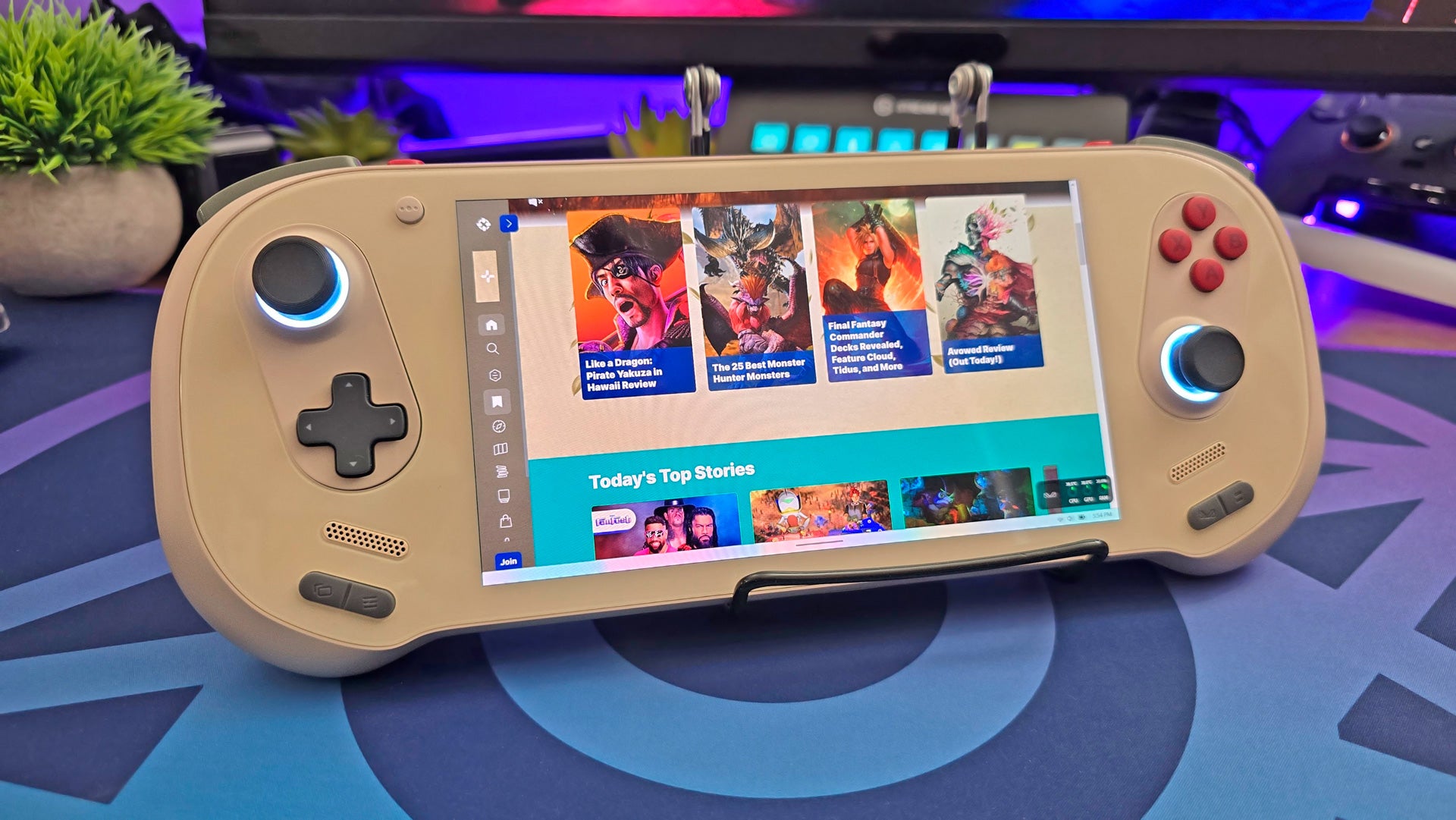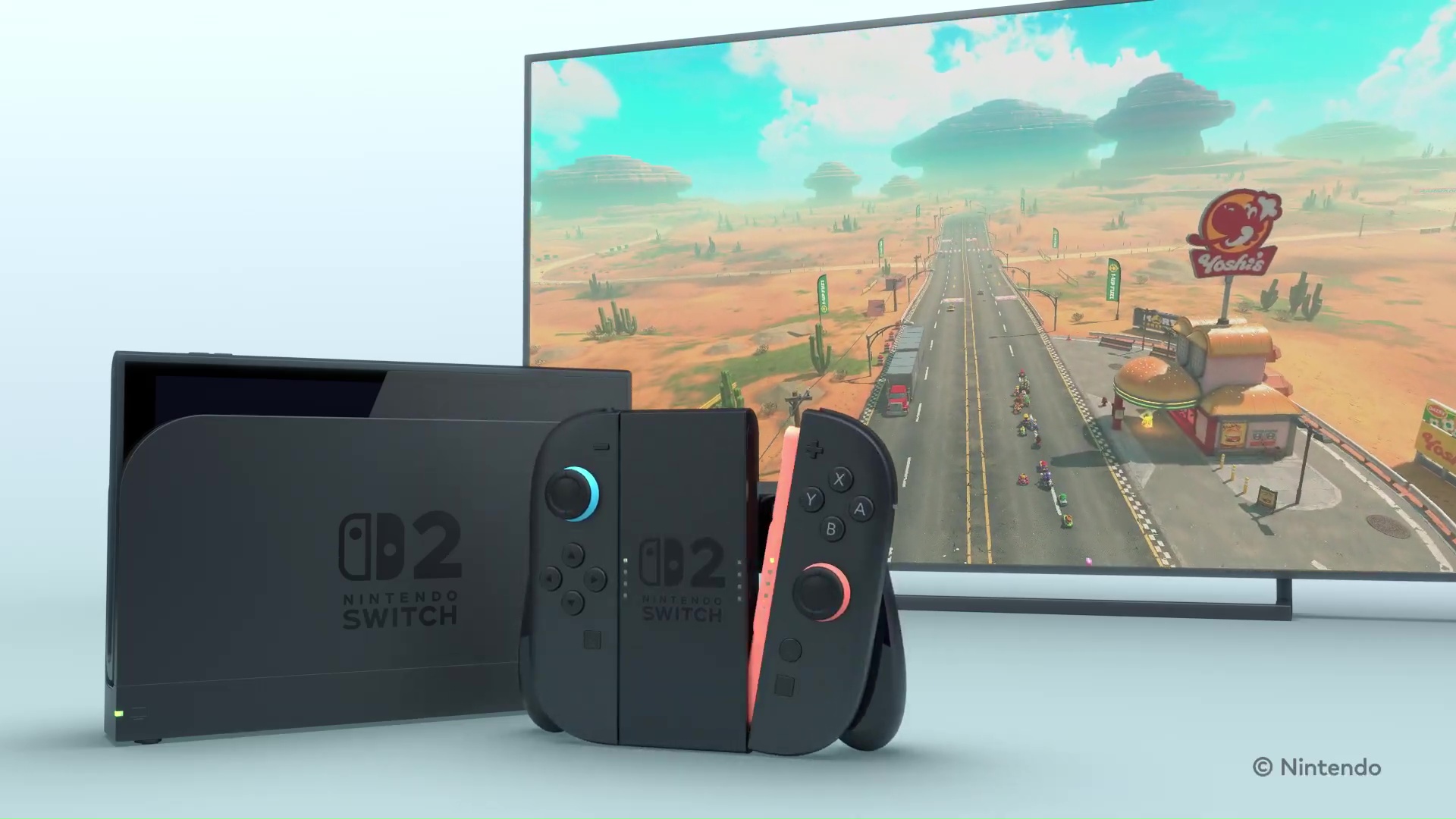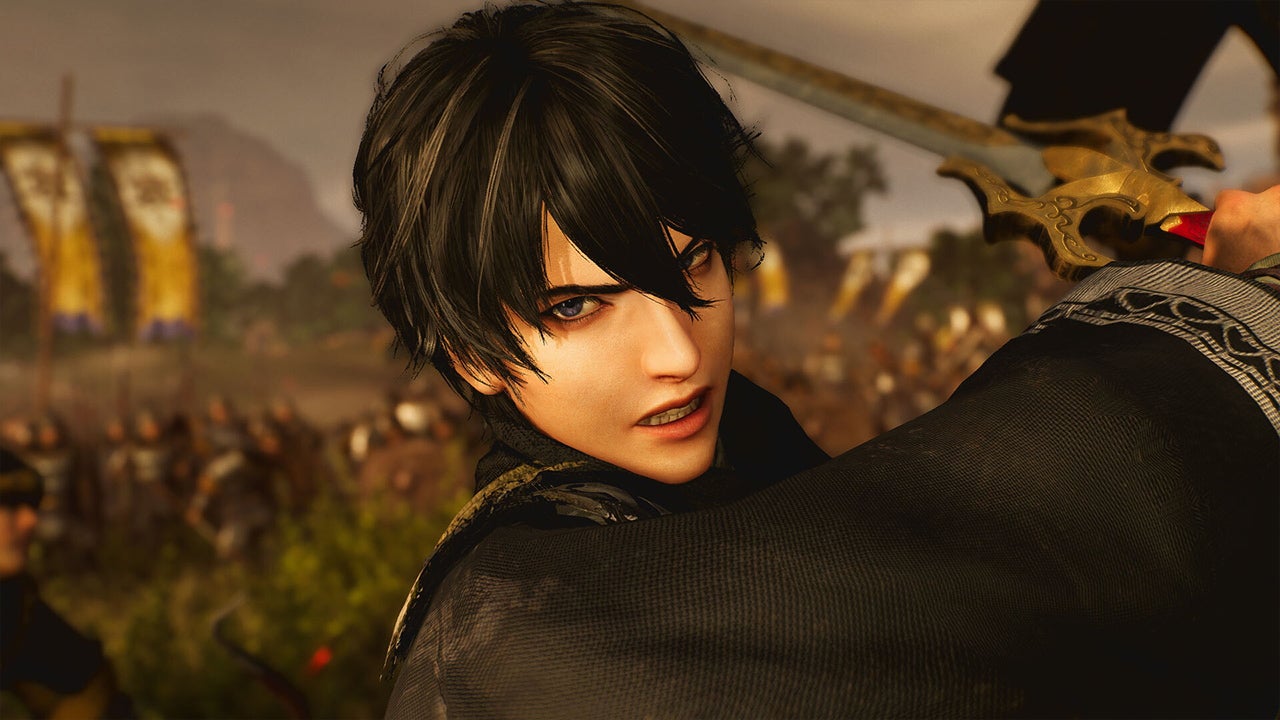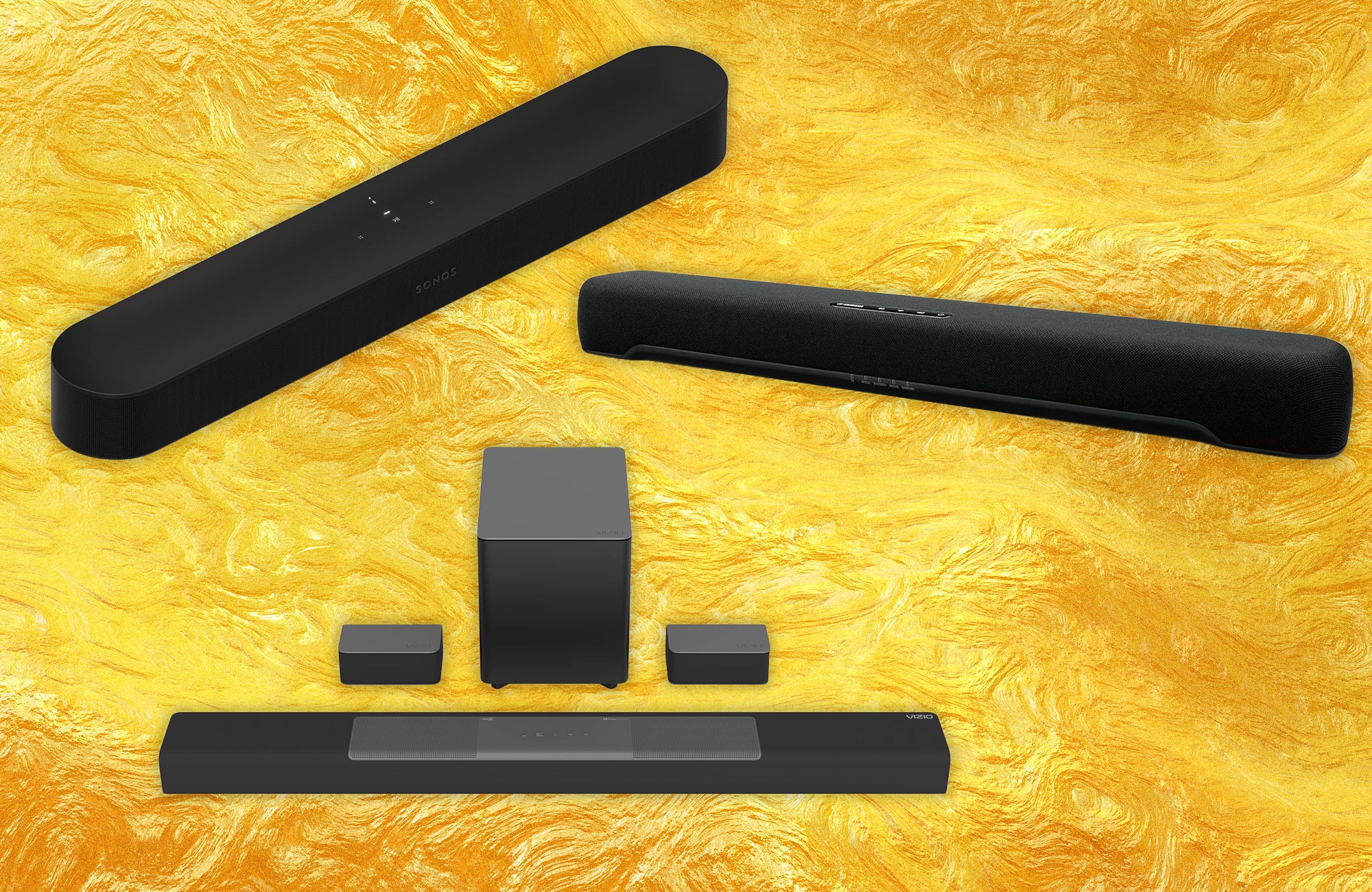
The handheld PC gaming market is more competitive than it’s even been, which means any new entrant needs to do something special to stand out. The upcoming Ayaneo 3 is out to do just that with a top-spec that includes a 144Hz OLED screen, an RDNA 3.5 GPU for top-tier gaming performance, and a unique modular design. It starts at $699 for the base version and jumps to $1,299 for the best performance and higher specs. My early impressions are positive – it’s shaping up to be not just one of the best Steam Deck alternatives, but one of the best handhelds on the market – but you’d better start saving now.
The More Things Change
Ayaneo was one of the first companies making modern handheld gaming PCs, and though competition is much fiercer than it was then, I still think it makes some of the most comfortable handhelds available. It has had more time to hone its craft, which has allowed it to nail things like its grips and the position and feel of its controls.
Holding the Ayaneo 3 in my hands, it’s quite similar to the Ayaneo 2. That’s a wholesale positive in my book, because the Ayaneo 2 was easily one of the most comfortable handhelds I’ve used, easily besting the Steam Deck and Lenovo Legion Go. I’d even put it a smidge higher than the Asus ROG Ally X, though that handheld is also excellent. The grips have a fine-tuned chunk to them that nestles just perfectly in my palm and the weight is well balanced for gaming in a lap or resting your hands on a table.

I consider myself pretty average, and for my medium-sized hands, the controls fall right under my thumbs. Everything feels very natural and well considered. Though, if you’d rather swap out for Steam Deck like touchpads or an eight-way D-pad, that’s also an option thanks to its new modular controls.
The keyboard and mouse controls have also been fine-tuned. Ayaneo has always offered mouse pointer emulation and shortcut keys, but it now features three different modes that can be swapped between using a button on the bottom. Mouse control is the best it’s ever been and controlling the pointer with a joystick now feels very natural. It’s another example of the refinement that’s possible from having produced multiple generations of handhelds.
Swap It Up
In a first for handheld gaming PCs, the Ayaneo 3 allows you to swap the control scheme with interchangeable modules – Magic Modules, Ayaneo calls them. It’s a cool feature, not unlike that offered by some premium console controllers, like the Turtle Beach Stealth Pivot.
By default, it comes with the usual offset sticks, cross-style D-pad, and ABXY face buttons. These modules can be ejected using an option in AyaSpace 3, the latest version of the handheld line’s configuration software, or by holding the control button on the bottom of the system. Once they’re out, they can be replaced with any combination of four other modules and two different styles of sticks.

Right now, the options include two modules that replace the joysticks with clickable touchpads for each side, another that changes the D-pad to the circular eight-way, and a final module that seems tailor-made for fighting games with two columns of three buttons.
There are also two pairs of swappable sticks that friction fit onto the module’s stems. The stock sticks are the same wide-top concave versions used last generation. The Magic Module kit (available separately) provides a pair of convex sticks, as well as a second, smaller set of concaves.
It’s a neat concept, but the early kit I was sent didn’t provide any option for symmetrical sticks, which seems like an odd omission for a modular system like this. I was also surprised that all of the joysticks are the same height instead of offering taller and shorter versions like you find on premium controllers like the Xbox Elite Controller Series 2.

Still, it’s a cool idea and, as we’ve come to expect from Ayaneo, is designed to push the boundaries. Instead of having a physical push-button eject, it uses mechanical actuators that pop the modules out of their sockets.
Ayaneo warned me that this portion of the system was still being finalized and my prototype didn’t have the final version actual customers can expect. I happened to be holding the system out in front of me when I tried it and it literally launched the module at me. This shouldn’t be the case on any version you can actually buy, but it was certainly good for an unexpected laugh.
Long-term, not having a physical release could be a problem, but only time will tell.
Premium Hardware, Premium Performance
In its top configuration, the Ayaneo 3 comes with an AMD Ryzen AI 9 HX 370 CPU, 64GB of memory, and a whopping 4TB of storage. Once you hit the HX 370 tier, you can choose between LCD and OLED, but believe me, OLED is the version you want with its midnight blacks, gorgeous colors, and 800-nit peak brightness.
This particular version will set you back $1,800 and includes the Magic Module kit. But, let’s be real, for gaming you absolutely do not need 64GB of memory and 4TB of storage is overkill (especially since you can add a microSD card).
Instead, I recommend the 32GB, 1TB version, a.k.a., the first version with the HX 370, at $1,299. It’s still very expensive, but it’s comparable to a laptop with similar specs and has dedicated gaming hardware. Connect it to a docking station, and you could easily use it as a portable desktop or laptop replacement at school or work.

For gaming, it’s been phenomenal so far. Ayaneo has finally delivered what fans have been asking for: high refresh rate displays with VRR support. The OLED version I’ve been testing has been a treat for the eyes: silky-smooth, color rich, wide dynamic range, and overall great performance.
I’m nowhere near done with my testing – I’ll be spending a lot of time with it before I repeat my testing with the retail version in a month or two – but so far, it has been my favorite handheld PC gaming experience, bar none.
The Ryzen AI 9 HX 370 uses AMD’s Radeon 890M graphics, which is built on RDNA 3.5. The Ryzen 7 8840U, and most other PC handhelds right now, use RDNA 3, which is why I recommend saving up for the HX 370 version if you’re considering this handheld. We already know that the improvements to gaming performance are incremental, but when you’re playing on a small screen like this, 5-10% uplift is noticeable.
So far, I’ve tested Elden Ring, Baldur’s Gate 3, Spider Man 2, Red Dead Redemption 2, World of Warcraft, and a handful of indies. Each of those AAA games was able to maintain at least 45 FPS between 800p and 1080p at medium to high settings. Easier to run indie games are trivial. Just as importantly, they look amazing and feel just as good on the new OLED display.

Taking the time to tune the graphics settings and taking advantage of AMD Fluid Motion Frames (AFMF), FidelityFX Super Resolution (FSR), and Radeon Super Resolution (RSR), pushes that even further. As always, it’s a matter of adjusting settings to find the sweet spot between performance.
World of Warcraft, for example, makes for a perfect example of how powerful tweaking can be and just how meaningful the right CPU is to the performance of a handheld. It’s an old game but a dynamic one with lots of variation in frame rate depending on what you’re doing. Without FSR or AFMF, the Ayaneo 3 ran around 45 to 55 FPS in dungeons on ultra settings. With both enabled, that bumped to 95 to 105, even with masses of particle effects, players, and enemies crowding the screen.
Outside of gaming, I plan to bring the system into work to replace my employer-provided laptop for productivity. Truth be told, the HX 370’s CPU cores are far more capable than its GPU cores, and it’s more than up to any productivity task you’ll encounter in the average day of work or school. You could easily use it for editing photos and videos, graphic arts, and even streaming.
Final Thoughts
All of this is true of most gaming handhelds these days, but the combination of display, performance, ergonomics, and the kinesthetic joy of engaging with it make the Ayaneo 3 feel like something special in these early days. We’ll see if that wanes or changes as I spend more time with it.
I secretly hope that they release a lower cost version without swappable modules but keeping the HX 370 and OLED screen. $1,299 is super expensive for a handheld if you don’t plan to replace another system with it. It’s a neat idea, but if you’re happy with the layout, it would be nice to see a version with the best screen and processor without paying for features you don’t need.
Christopher Coke has been a regular contributor to IGN since 2019 and has been covering games and technology since 2013. He has covered tech ranging from gaming controllers to graphics cards, gaming chairs and gaming monitors, headphones, IEMs, and more for sites such as MMORPG.com, Tom’s Hardware, Popular Science, USA Today’s Reviewed, and Popular Mechanics. Find Chris on Twitter @gamebynight.















